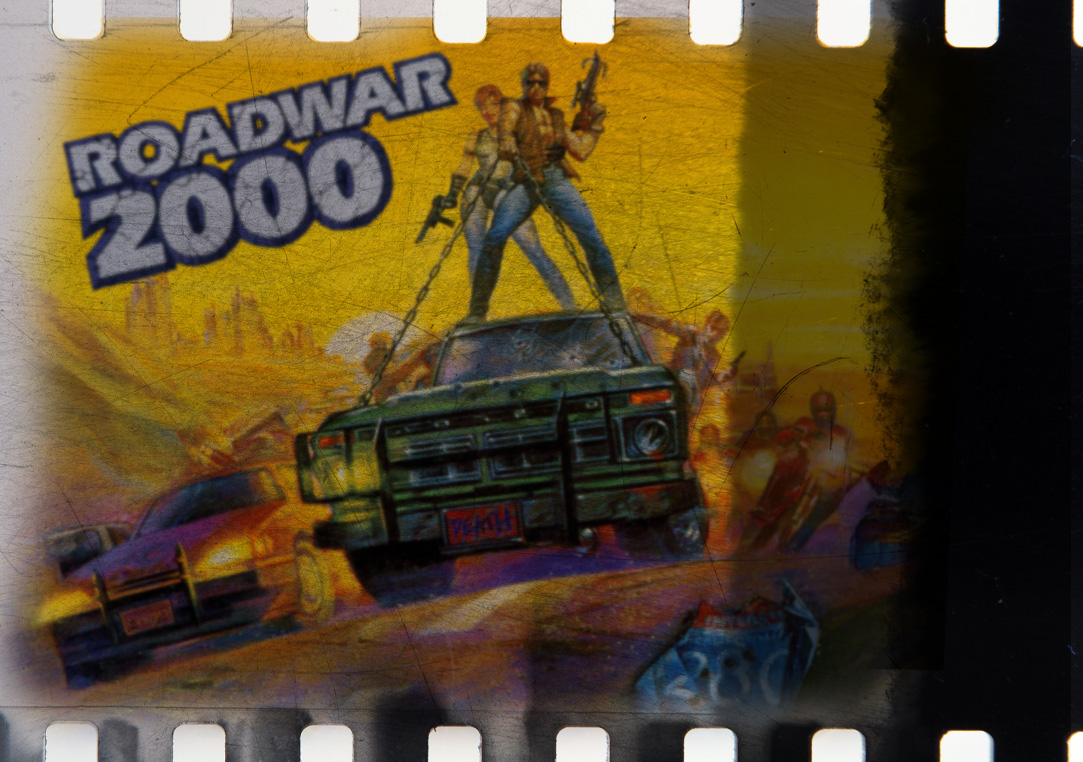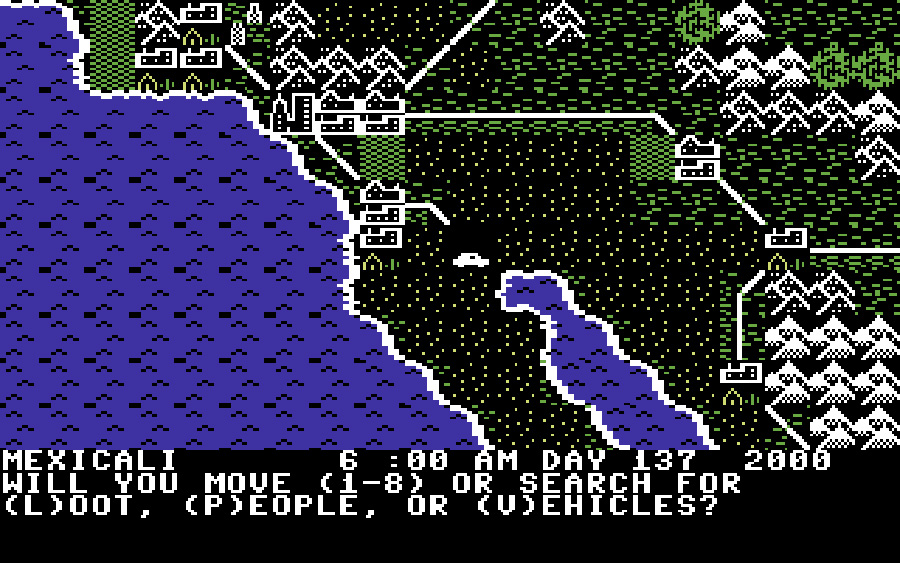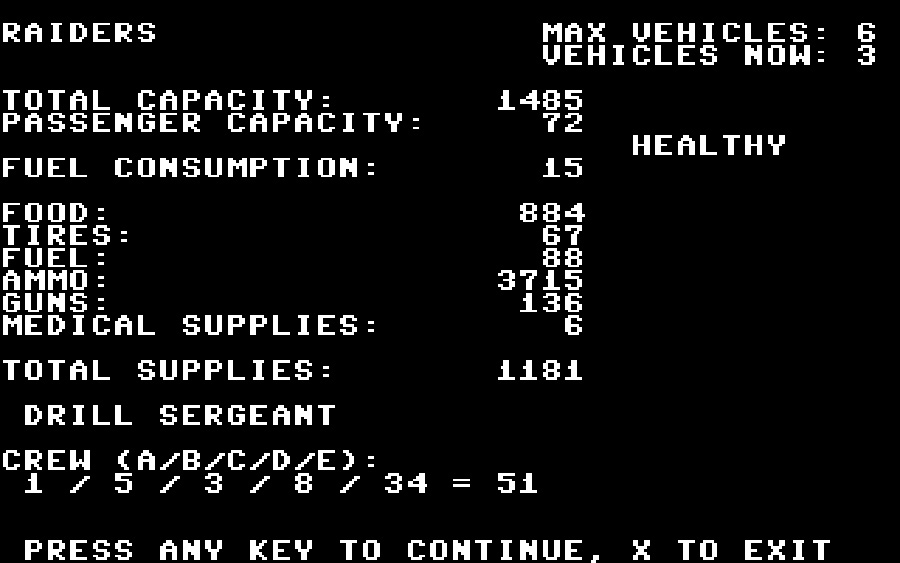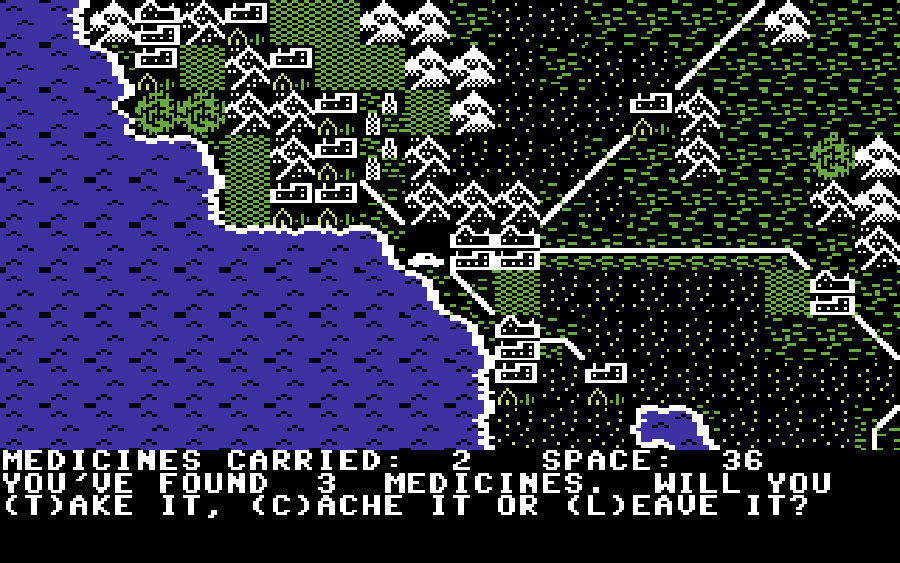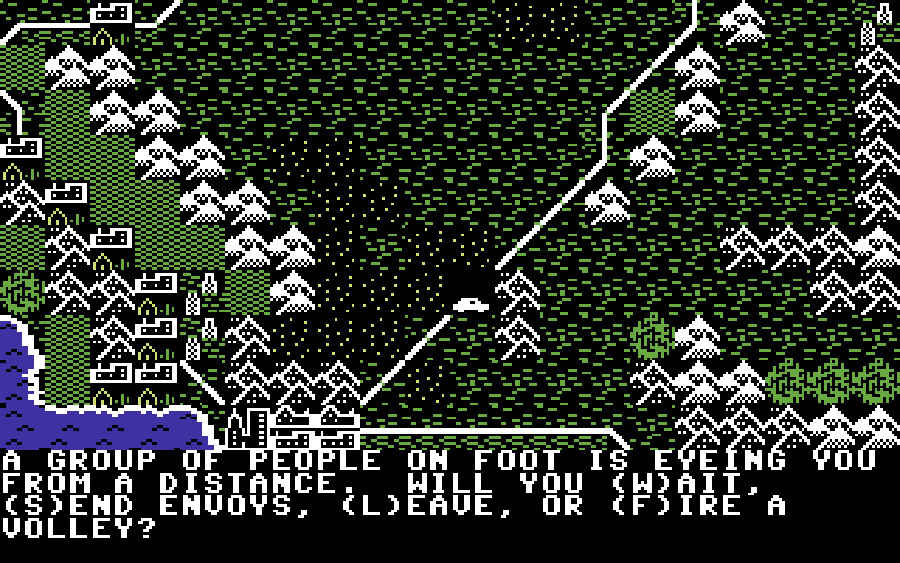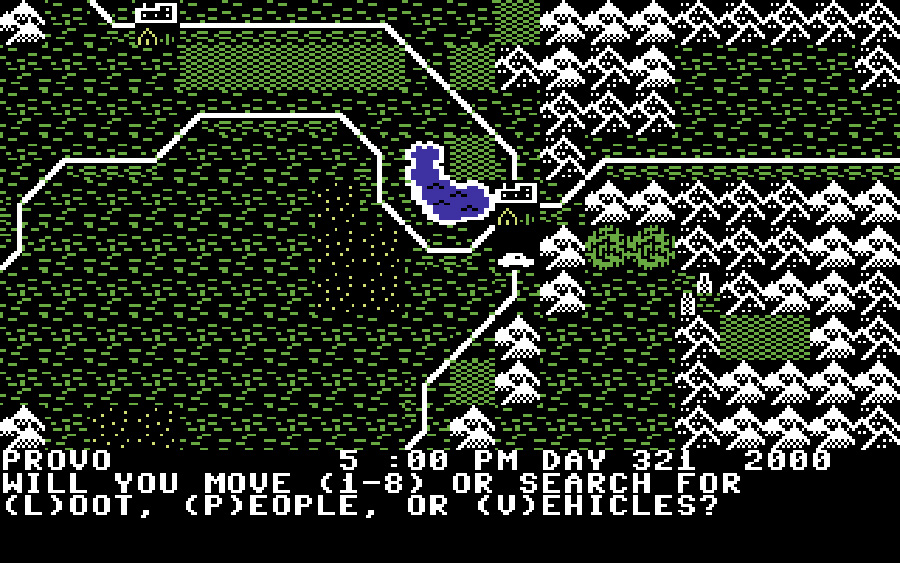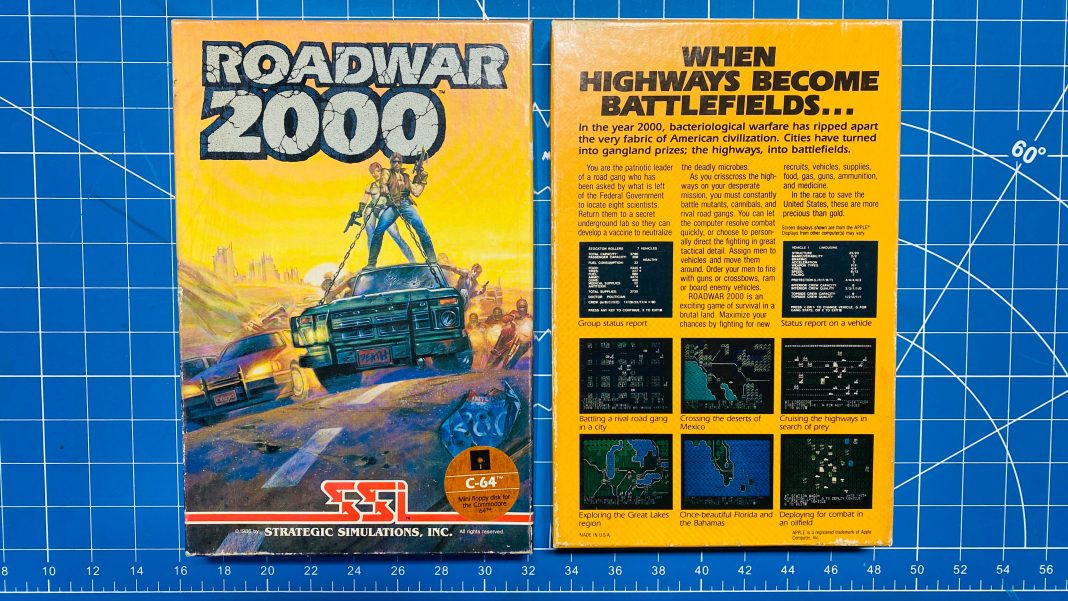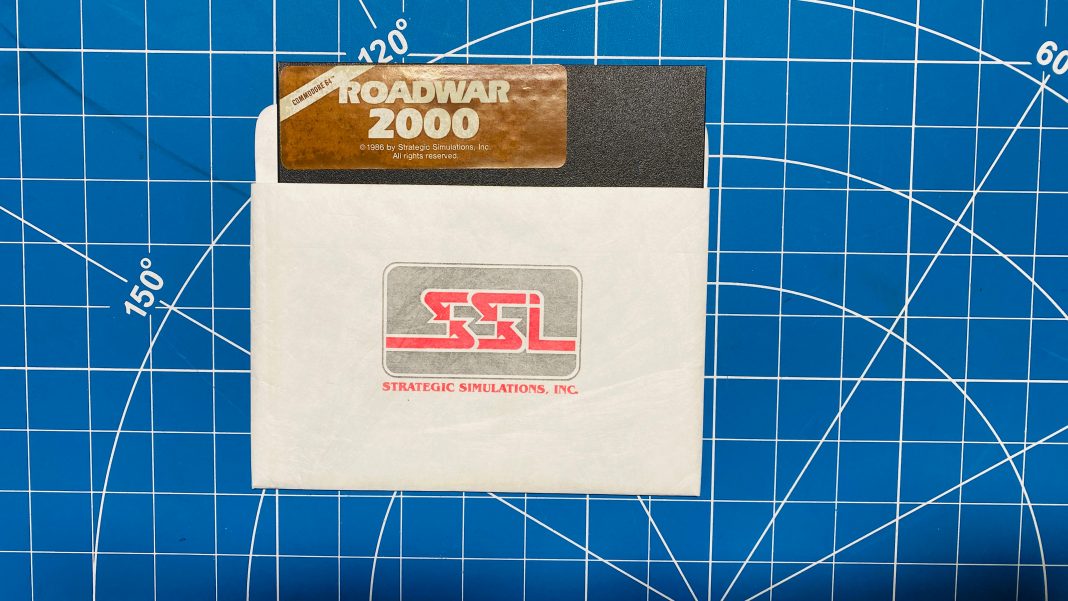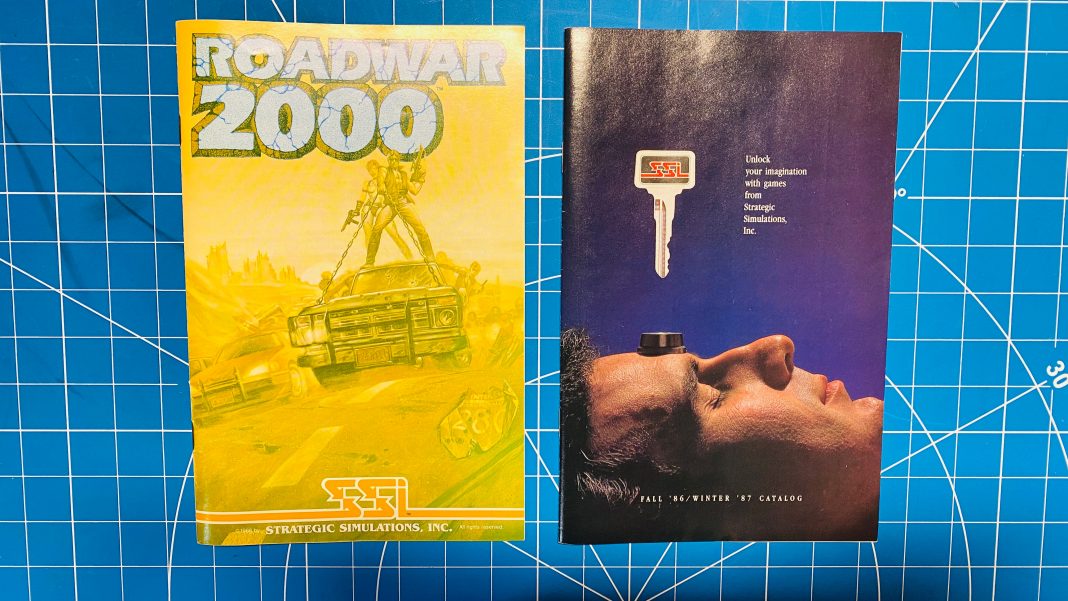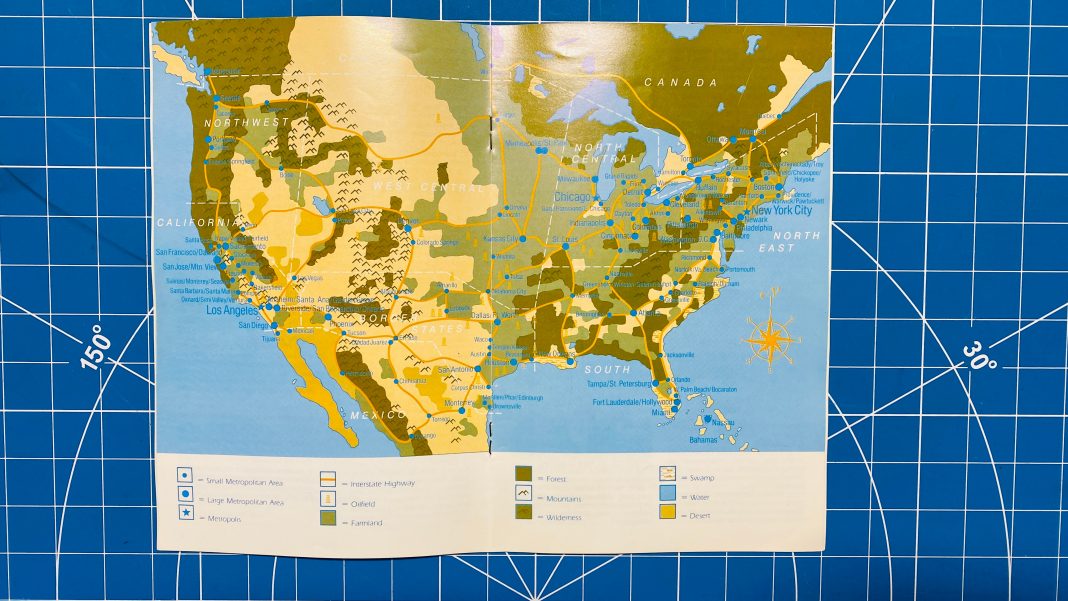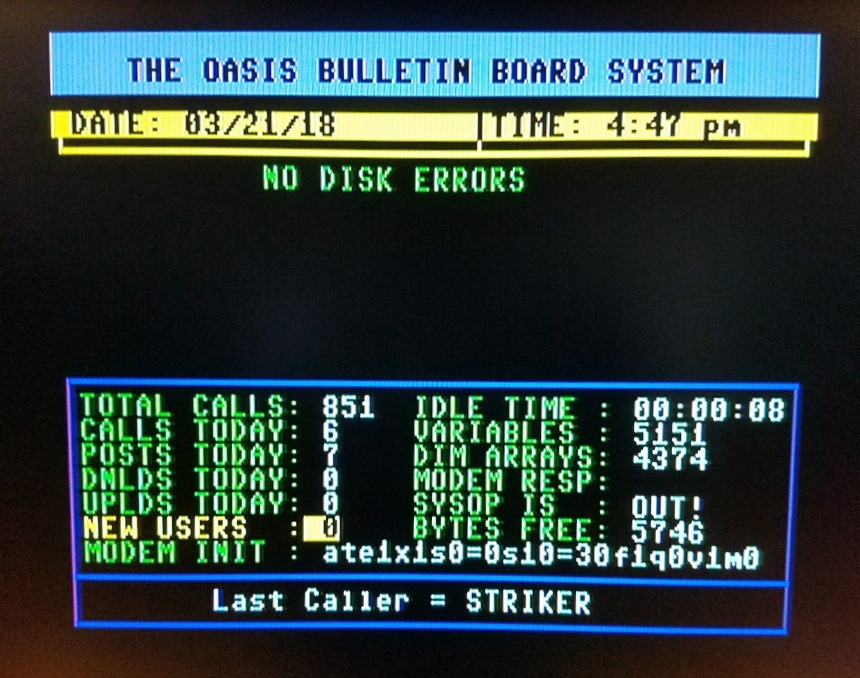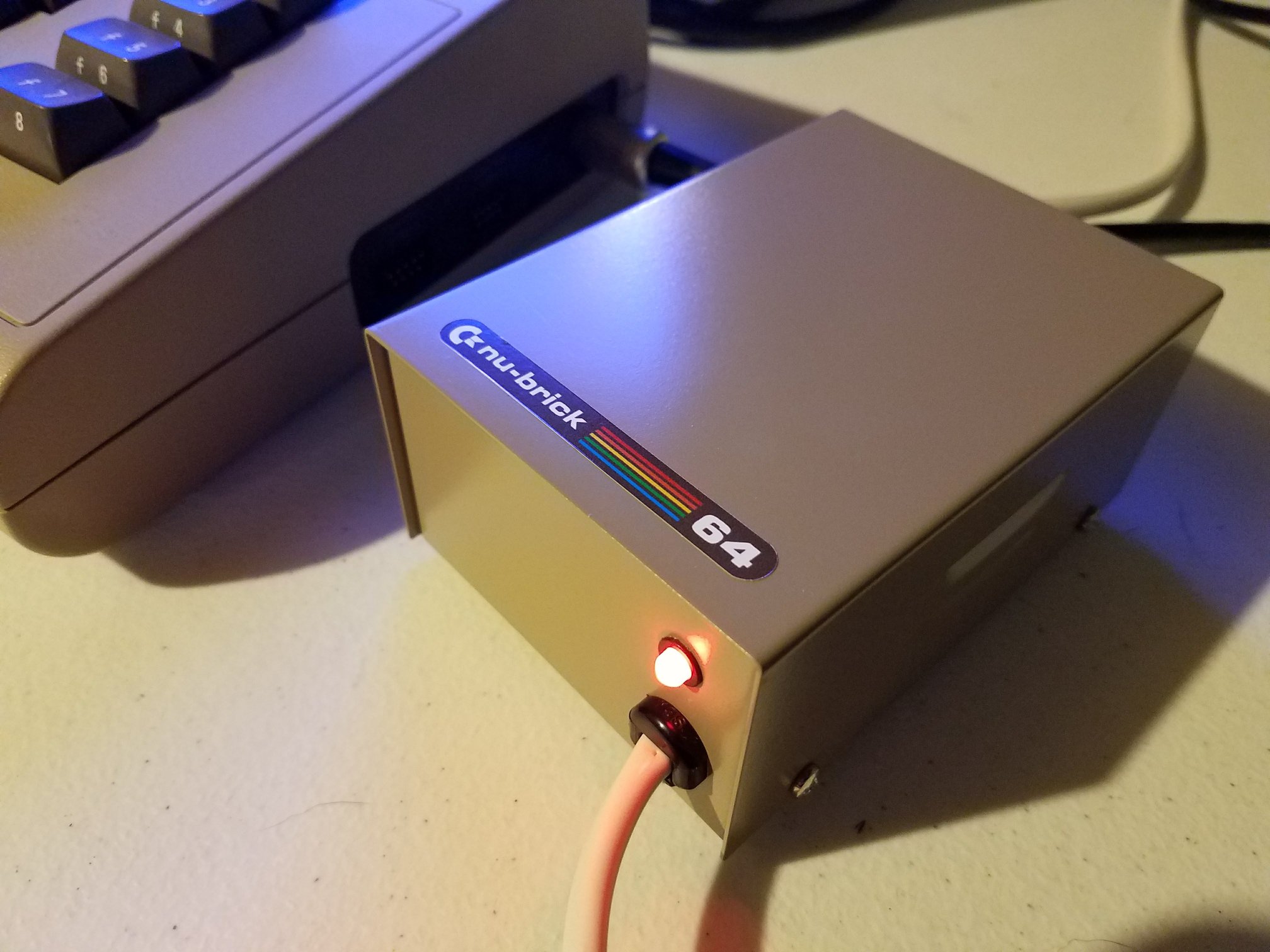When you think of Strategic Simulations Inc. (SSI), visions of hex-based wargames and fantasy adventures like Pool of Radiance may come to mind. But in 1986, the company took a sharp turn into a dystopian future with the release of Roadwar 2000. Designed by Jeffrey Johnson, this Commodore 64 title mashed together tactical strategy, turn-based combat, and a Mad Max-inspired setting—resulting in a surprisingly ambitious and atmospheric game. Roadwar 2000 became a cult favorite among fans of post-apocalyptic fiction and helped solidify SSI’s place beyond traditional wargame circles.
While not as well-known today as some of its contemporaries, Roadwar 2000 deserves a second look for its bold mechanics, challenging gameplay, and thematic richness. This feature dives deep into the game’s legacy, gameplay systems, and cultural impact.
America in Ruin: Setting the Scene
The plot of Roadwar 2000 unfolds in a United States ravaged by a deadly virus unleashed by terrorists. Civilization has collapsed, martial law has failed, and anarchy reigns. Players take on the role of a road gang leader trying to survive—and eventually bring order to the chaos. Their ultimate goal? Assist a secret government agency by locating eight missing scientists who hold the key to humanity’s recovery.
It’s a grim setup that sets the tone early. The post-apocalyptic setting isn’t just a backdrop; it deeply informs the game’s mechanics and design philosophy. Every journey between cities carries the threat of ambush, every encounter can lead to ambush or alliance, and every decision you make can mean life or death for your crew.
This gritty world-building is one of the defining elements that makes Roadwar 2000 stand out. At a time when many strategy titles were focused on castles or cold war scenarios, SSI’s vision of a fractured America felt both fresh and uncomfortably plausible.
Turn-Based Carnage on the Open Road
At its core, Roadwar 2000 is a turn-based strategy and resource management game with RPG elements. Players begin with a small gang, a vehicle or two, and a thirst for expansion. You build your power base by recruiting new members, capturing vehicles, and acquiring weapons and supplies through raids, scavenging, and combat.
Combat is a mix of chance and tactics. Players issue commands to each vehicle and gang member during turn-based battles that can take place in cities or on the open highway. Vehicle types vary in speed, armor, and firepower, adding a strategic layer to each encounter. You might outfit a fast motorcycle to harass the enemy while keeping a heavy truck at the rear to absorb damage and deliver firepower.
The game also features a scouting and recon system—an unusual level of depth for 1986. Sending scouts ahead can reveal enemy positions and prevent your convoy from walking into an ambush. Managing food and fuel adds to the tension, especially when resources dwindle far from safe territory.
As your gang grows stronger and your fleet more diverse, the strategic possibilities open up. But so do the threats. Rival gangs, mutants, religious zealots, cannibals, and government patrols all roam the wastelands. You’ll need to balance aggression with caution—and sometimes, diplomacy.
Roadwar 2000’s Role-Playing Depth
While not a traditional CRPG, Roadwar 2000 incorporates several role-playing elements that give it staying power. Each member of your crew has statistics affecting their performance, and the composition of your group influences your success in combat and exploration.
You’ll need to make decisions that shape your gang’s culture—do you act like a brutal warlord or a pragmatic savior? Your standing with other factions and cities can shift depending on your actions. Some towns may greet you with open arms, while others may send their militias after you.
This morality-flexibility, while light by today’s standards, was rare in 1986. It hinted at a more dynamic, player-driven experience that wouldn’t become mainstream until much later in gaming history.
Visuals and Audio: Efficient but Effective
Let’s be honest: no one played Roadwar 2000 for its graphical fidelity. On the Commodore 64, the game features a mostly text-based interface supplemented with simple but effective overhead vehicle and city visuals. The graphics are functional—nothing more—but they get the job done, conveying enough information to keep the gameplay engaging.
Where the game does shine is in its tone. The sparse, utilitarian interface enhances the feeling of a society barely hanging on. You’re not meant to feel safe or comfortable. The Commodore’s SID chip provides some basic audio cues, but for the most part, this is a game that lets silence and tension speak louder than music.
Legacy and Influence
Roadwar 2000 sold well enough to earn a sequel—Roadwar Europa—which took the chaos to a ravaged Europe. Though the sequel built on many of the same mechanics, the original remains the more iconic of the two, thanks in part to its original setting and narrative focus.
The game also foreshadowed a wave of post-apocalyptic media that would explode in popularity in the following decades. While Wasteland (1988) and Fallout (1997) would receive much of the credit for defining the genre in gaming, Roadwar 2000 laid some early groundwork in blending strategy, RPG, and narrative in a post-collapse setting.
Today, you’ll find a small but passionate fanbase keeping the memory of Roadwar 2000 alive. Dedicated websites, emulation walkthroughs, and fan retrospectives continue to surface, proof that the game still resonates with retro gamers and those curious about the roots of post-apocalyptic strategy games.
What Made It Work
There’s a certain elegance to Roadwar 2000’s design. It’s punishing without being unfair, deep without being overly complicated, and richly thematic without the need for high-end presentation. For players with patience and a taste for tactical planning, the game offers dozens of hours of gameplay.
Its open-ended structure means no two playthroughs are exactly the same. You might uncover a scientist early and gain a massive advantage—or you might lose half your convoy in a botched raid and spend hours rebuilding. That uncertainty is part of the appeal.
Unlike many contemporaries, Roadwar 2000 doesn’t railroad the player. You decide where to go, who to fight, and how to grow your gang. That level of autonomy was uncommon in mid-80s games and gave players a sense of ownership over their stories.
Room for Improvement
That’s not to say the game is flawless. Roadwar 2000 can be obtuse for new players, especially without the manual or a walkthrough. The interface, while serviceable, is clunky by modern standards. And while the permadeath and difficulty spikes add tension, they can also frustrate players unaccustomed to trial-and-error learning curves.
Additionally, some of the game’s systems—like character development—lack the granularity and payoff that later RPGs would popularize. The balance between strategy and role-playing sometimes leans too heavily toward micromanagement, which might turn off players seeking more narrative or character interaction.
Final Thoughts: A Hidden Gem Worth Rediscovering
For retro strategy fans, Roadwar 2000 is a must-play. It combines a compelling setting with mechanics that were ahead of their time, wrapped in an unforgiving but rewarding gameplay loop. It’s not just a piece of gaming history—it’s a solid game in its own right, with enough depth to keep players hooked and enough charm to make its dated visuals forgivable.
Whether you’re revisiting it through emulation or firing it up on vintage hardware, Roadwar 2000 holds up remarkably well. It’s a reminder that innovation doesn’t always come with fanfare—sometimes, it roars down the highway in a rusty rig with a mounted machine gun.


